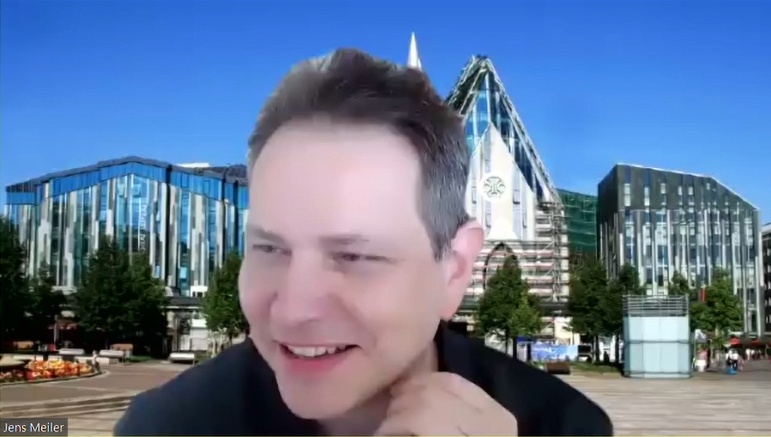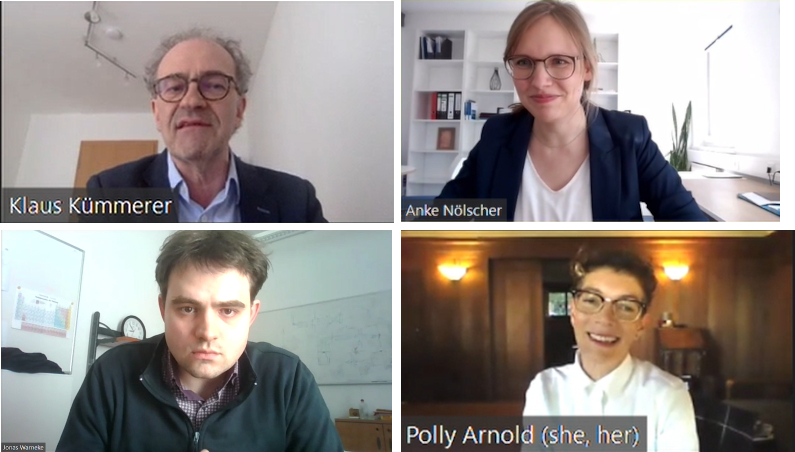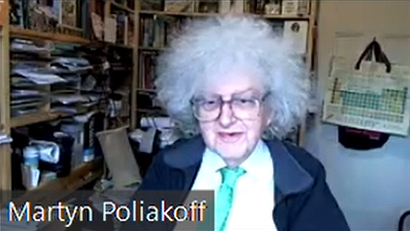The JCF Frühjahrssymposium, organized every spring by the JungChemikerForum (JCF) of the Gesellschaft Deutscher Chemiker (GDCh, German Chemical Society), is one of the largest conferences for young scientists in Europe. Due to the pandemic, last year’s symposium had to be canceled. This year, the conference went virtual, taking place from March 29 to April 1, 2021, with the topic “United in Chemistry”. It was organized by the young chemist groups from Berlin, Dresden, Halle, and Leipzig, all Germany. The event was attended by 377 participants, of which 53 came from outside of Germany.
A Customized Virtual Conference Space
The team organized the virtual conference using the platform Gather, customizable software that allowed them to replicate a real-life conference very closely. The platform provides video-calling and chat support in a virtual space that was built to resemble a physical conference venue.
Participants could choose a pixel-art avatar for themselves, move around freely in the virtual venue (see Fig. 1), and strike up a conversation with anyone “standing” nearby or “walking” past. Small video-call windows for anyone in close proximity were shown automatically as an overlay. This made it very easy to join ongoing conversations or start new ones by simply walking up to a group of conference participants, whose names were shown above their avatars. Interactive objects, i.e., documents, websites, or videos which you could walk up to and then view or watch, allowed the team to provide information (such as instructions for participants or a poster of the program), researchers to show their work on posters, and the sponsors to present their material.
|
|
|
Figure 1. The virtual conference venue. |
Poster boards and whiteboards could be viewed and discussed together, and “sitting down” at a table provided a space for more private conversations in smaller groups (see Fig. 2). The venue also featured a lecture hall, which allowed for a seamless transition to the lectures held via Zoom by just walking in, taking a virtual seat, and pressing a single button to join the online lecture. Each speaker had prepared three multiple-choice questions about their talk that the audience answered afterwards, in addition to the traditional Q&A segments. Social events such as the board game night, which included several simple online games to choose from, and the conference dinner, which featured a quiz in which each table competed, also replicated the experience at a physical conference well.
|
|
|
Figure 2. The virtual poster session and games night. |
Before the start of the conference, virtual workshops allowed the participants to learn about topics such as corporate and science communication, career entry in chemistry, nutrition in space, and strategies for innovation.
Welcome Reception and Opening Ceremony
After a short greeting by Tom Götze, University of Leipzig and Co-Head of Digital Venue for the conference, the welcome reception (see Fig. 3) allowed participants to familiarize themselves with the virtual conference venue, as well as meet and talk to the other attendees.
|
|
|
Figure 3. Welcome reception. |
The conference was opened with greetings from Klara Dittmer, Humboldt University of Berlin/University of Rostock, and Ken Luca Abel, University of Leipzig, Heads of the symposium, who shared some of the challenges in converting the conference to an online event and explained that the conference motto, “United in Chemistry” was meant to recognize and appreciate diversity, both in the research presented at the event and in the scientists working in the field. Abel also welcomed delegations from the Northeastern Section of the American Chemical Society (NESACS) and the Northeastern Section Younger Chemists Committee (NSYCC) who attended as part of a Germany–U.S. exchange program.
Professor Erich Schröger, Vice-Rector for Research and Young Academics, Leipzig University, Germany, encouraged the young chemists in attendance to stay interested, ask questions, and share their ideas. He acknowledged the difficulties students face in the pandemic and commended the organizers for choosing a software platform that allows for personal interaction in these challenging times. Peter R. Schreiner, University of Gießen, Germany, and GDCh President, pointed out that the online format of the event had allowed several regional JCF forums to unite and organize it together—matching the conference motto. He emphasized that chemistry is a key discipline in solving the issues facing society today, and that chemists have to unite and work to defend and promote science. Emiel Dobbelaar, TU Kaiserslautern, Germany, and Chairperson of the JCF, observed that while scientists stayed apart during the pandemic, science came together anyway. He explained how the digital format of this year’s Frühjahrssymposium might even extend the scope of topics and the geographic reach of the event.
|
|
|
Figure 4. Opening ceremony with Klara Dittmer, Humboldt University of Berlin/University of Rostock, and Ken Luca Abel, University of Leipzig, Heads of the symposium (top left); Professor Peter R. Schreiner, University of Gießen, Germany, and GDCh President (top right); Professor Erich Schröger, Vice-Rector for Research and Young Academics, Leipzig University, Germany (bottom left); Emiel Dobbelaar, TU Kaiserslautern, Germany, and Chairperson of the JCF (bottom right). |
Opening Lecture
The Opening Lecture on “Computer-Aided Design of Antibodies and Vaccines” was held by Professor Jens Meiler, Leipzig University Medical School, Germany, and Vanderbilt University, Nashville, TN, USA. Meiler works in computational biology and his group tackles problems such as predicting the three-dimensional structures of proteins from their amino acid sequences, computer-aided drug discovery, and the design of proteins specifically engineered for medical applications, e.g., therapeutic antibodies and vaccines.
|
|
|
Figure 5. Jens Meiler, Leipzig University Medical School, Germany, and Vanderbilt University, Nashville, TN, USA, during his talk. |
Meiler gave a quick overview of the biological path that leads from mRNA to an amino acid chain, which then folds into secondary and tertiary structures that are important for the function of a protein. He explained the driving forces of protein folding and how computers can be used to predict the results of the folding process—a challenging task due to the vast number of possible conformations. Calculations could also help solve the so-called “inverse protein folding problem”, in which a folded, functional structure is given and an amino acid sequence that can realize this 3D structure is the target.
Meiler introduced the software Rosetta, which can be used to translate amino acid sequences into 3D protein structures and vice versa, as well as perform a range of other modeling tasks useful in biochemistry and drug development. He then explained how antibodies are proteins that evolve naturally to neutralize pathogens and that computer-assisted protein design can be used to artificially create potent antibodies that fight multiple strains of a virus at the same time [1,2]. Finally, he pointed out that everybody can help with protein folding research by playing the computer game fold.it.
Carl Roth Sponsorship Award 2020
As part of the conference opening, Maximilian Benz, Karlsruher Institut für Technologie (KIT), Germany was awarded the Carl Roth Sponsorship Award 2020. The prize is sponsored by the Carl Roth GmbH + Co. KG, Karlsruhe, and is awarded to young molecular scientists for outstanding contributions in the fields of resource-friendly synthesis or the innovative application of chemicals. It includes EUR 5,000 in prize money, as well as a EUR 3,000 voucher for items from the Carl Roth catalog.
Benz was honored for the development of the “chemBIOS” technology, which uses nanosized drops as reactors and allows for fast reactions using very small amounts of material. The method, as he explained in his award lecture, could be particularly useful in drug development [3].
|
|
|
Figure 6. Maximilian Benz receiving the Carl Roth Sponsorship Award 2020. |
Selected Talks
The symposium featured a wide range of inspiring lectures. Professor Klaus Kümmerer, Leuphana University Lüneburg, Germany, focused on sustainability in his talk “Benign by Design—Targeted Design of Chemical Products of the Future”. He explained the principles of “green chemistry” and pointed out that achieving “ideal” green processes that satisfy all of these principles perfectly, or designing closed-loop processes without any loss of resources, is impossible. As he stated, “We cannot win, we can only try to lose as little as possible.” Still, aiming to design chemical processes and products to be as environmentally friendly and sustainable as possible is important. Kümmerer and colleagues have proposed rules for the integration of chemistry into a circular economy [4,5].
Professor Anke Nölscher, University of Bayreuth, Germany, covered atmospheric chemistry in her talk “Between budgets and details: The VOC view on atmosphere–ecosystem exchange processes”. She explained how volatile organic compounds (VOCs) are unique for different environments and emission sources, take part in atmospheric chemistry, and can be used to study atmospheric processes. They are usually detected using gas chromatography or mass spectrometry. However, newer methods such as total OH reactivity can also be used [6]. In this method, the loss rate of hydroxyl radicals is used to determine the concentration of compounds that react with this radical, and thus, obtain information about the atmospheric conditions. Using this approach, Nölscher and colleagues have, for example, studied how the properties of the air over the Amazon rainforest change with the seasons [7]. Understanding atmospheric processes is important because they can affect air quality, weather, and climate.
|
|
|
Figure 7. Selected lecturers during their talks, from top left to bottom right: Klaus Kümmerer, Leuphana University Lüneburg, Germany; Anke Nölscher, University of Bayreuth, Germany; Jonas Warneke, University of Leipzig, Germany; Polly L. Arnold, Lawrence Berkeley National Laboratory and University of California, Berkeley, USA. |
Jonas Warneke, University of Leipzig, Germany, focused on the challenge of building any desired molecule on demand from smaller fragments—chemistry as convenient as 3D printers or the fictional “replicator” in the Star Trek franchise. In his talk titled “Chemical Adventures with Molecular Fragment Ions: Understand Them, Catch Them, Use Them”, he explained how mass spectrometry already produces the necessary building blocks, i.e., fragment ions of molecules. They can also be used to isolate these fragments and react them with each other. The amounts of product are usually much too small to be synthetically useful. However, in some cases, mass spectrometry can be used as a preparative tool and deposit ions on a substrate, and new ion deposition instruments allow for higher ion currents and larger amounts of product [8,9].
Professor Polly L. Arnold, Lawrence Berkeley National Laboratory and University of California, Berkeley, USA, provided a closer look at the “bottom of the periodic table” in her talk “Homo- and heterobimetallic actinide-metal complexes from unusual bonding motifs to catalytic dinitrogen functionalization”. She explained that f-block chemistry is important for many applications and that elements such as cerium are less toxic than one might think—much less toxic than iron, for example. Then, she gave an overview of some of the many examples of interesting f-block compounds researchers have created. Compounds with f-block elements have unusual electronic structures and can, for example, form low-coordinate complexes and activate small molecules such as N2 [10] or form interesting metal–metal bonds [11].
The agenda also featured several industry talks, in which representatives from the chemical industry, consultancies, and a patent attorney’s office gave overviews of their company’s products and services and covered possible career paths for the young chemists in attendance.
Closing Lecture by Sir Martyn Poliakoff
In the final session with guest chair Professor Miriam O’Duill, University of Nottingham, UK, Sir Martyn Poliakoff, University of Nottingham, presented work on “greener photochemistry” he performed together with Professor Michael W. George, also at the University of Nottingham. He started by showing the audience the GSK Carbon Neutral Laboratory for Sustainable Chemistry at the University of Nottingham, built from natural materials and incorporating a variety of environmentally friendly features, e.g., solar cells, a natural ventilation system, and water-saving equipment—a very appropriate place for research into sustainable processes.
|
|
|
Figure 8. Sir Martyn Poliakoff, University of Nottingham, UK, during his talk. |
Poliakoff then looked back at a paper in Science from 1912 by Giacomo Ciamician entitled “The photochemistry of the future” [12], which drew the surprisingly early conclusion that instead of fossil resources, chemistry might perhaps be better performed using light energy. Poliakoff pointed out that while there is a “huge body of academic research” on photochemistry today, its large-scale use in chemical manufacturing is still rare. He presented a strategy for realizing Ciamician’s vision by improving the accessibility of photochemical processes.
Poliakoff showed, for example, the progress the team has made on the use of photocatalytically generated singlet O2 in supercritical solvents for oxidation reactions [13]. He also showed special reactors that can be used for photochemistry, e.g., a vortex-generating reactor [14] and a so-called “PhotoVap”, an instrument based on a rotary evaporator that creates a thin film of the reaction mixture, which can be irradiated particularly well, on the inside of the reaction vessel [15].
Closing Ceremony and Awards
At the end of the conference, awards for the best talks and posters were presented. For the talks, the third place went to Noah Bissonnette, Celgene, Cambridge, MA, USA, and Northeastern University, Boston, MA, USA, for his presentation on “Expedient Access to Saturated Nitrogen Heterocycles by Photoredox Cyclization of Imino-Tethered Dihydropyridines”, Jana M. Krüger, Humboldt University of Berlin, Germany, took second place with her work on “Paving the Way toward an Entire Material Platform via Mussel-Inspired Polymerization”, and the first prize went to Susanne Reischauer, Max-Planck-Institute of Colloids and Interfaces, Potsdam, Germany, and Freie Universität Berlin, Germany, for “The Wavelength Matters”, a talk in which she presented work on a modular approach to dye-sensitized metallaphotocatalysts that can access the entire visible-light spectrum.
The poster prizes were voted on by all conference attendants, choosing from the 108 posters presented. The second place went jointly to Teresa Friedrichs, University of Düsseldorf, Germany, for her poster on “Combining Bio- and Organocatalysis under Continuous Flow Conditions” and Max Milewski, Laboratoire de Chimie de Coordination, Toulouse, France, and University of Leipzig, for his poster on “Carboranylphosphines meet dendrimers – New scaffolds for ligand design”. The first prize went to Joss Pepe Strache, University of Cologne, Germany, who presented work on “Enantioselective Nickel-Catalyzed Hydrocyanation Employing TADDOL-derived Phosphine-Phosphite Ligands”. An additional Twitter poster prize, determined by the number of likes on the social media platform, was presented to Muqsit Pirzada, Technical University of Berlin, Germany, for his poster on “Dual-epitope targeted high-affinity synthetic receptors for ultrasensitive cancer diagnosis”.
In the closing presentation, Ken Luca Abel showed that an estimated 264,000 kg of CO2 was saved by avoiding travel to and from the conference, with only 80 kg of CO2 emitted by running the necessary servers. Finally, Emiel Dobbelaar introduced the host city of the next JCF Frühjahrssymposium, which will take place in Hanover, Germany, on March 23–26, 2022, with the topic “Communicating the Future”.
References
[1] J. R. Willis, G. Sapparapu, S. Murrell, J.-P. Julien, V. Singh, H. G. King, Y. Xia, J. A. Pickens, C. C. LaBranche, J. C. Slaughter, D. C. Montefiori, I. A. Wilson, J. Meiler, J. E. Crowe, Redesigned HIV Antibodies Exhibit Enhanced Neutralizing Potency and Breadth, J. Clin. Investig. 2015, 125, 2523–2531. https://doi.org/10.1172/JCI80693
[2] S. J. Zost, P. Gilchuk, J. B. Case, E. Binshtein, R. E. Chen, J. P. Nkolola, A. Schäfer, J. X. Reidy, A. Trivette, R. S. Nargi, R. E. Sutton, N. Suryadevara, D. R. Martinez, L. E. Williamson, E. C. Chen, T. Jones, S. Day, L. Myers, A. O. Hassan, N. M. Kafai, E. S. Winkler, J. M. Fox, S. Shrihari, B. K. Mueller, J. Meiler, A. Chandrashekar, N. B. Mercado, J. J. Steinhardt, K. Ren, Y.-M. Loo, N. L. Kallewaard, B. T. McCune, S. P. Keeler, M. J. Holtzman, D. H. Barouch, L. E. Gralinski, R. S. Baric, L. B. Thackray, M. S. Diamond, R. H. Carnahan, J. E. Crowe, Potently Neutralizing and Protective Human Antibodies against SARS-CoV-2, Nature 2020, 584, 443–449. https://doi.org/10.1038/s41586-020-2548-6
[3] M. Benz, M. R. Molla, A. Böser, A. Rosenfeld, P. A. Levkin, Marrying Chemistry with Biology by Combining On-Chip Solution-Based Combinatorial Synthesis and Cellular Screening, Nat. Commun. 2019. https://doi.org/10.1038/s41467-019-10685-0
[4] K. Kümmerer, J. H. Clark, V. G. Zuin, Rethinking Chemistry for a Circular Economy, Science 2020. https://doi.org/10.1126/science.aba4979
[5] K. Kümmerer, Sustainable Chemistry: A Future Guiding Principle, Angew. Chem. Int. Ed. 2017, 56, 16420–16421. https://doi.org/10.1002/anie.201709949
[6] A. C. Nölscher, V. Sinha, S. Bockisch, T. Klüpfel, J. Williams, A New Method for Total OH Reactivity Measurements Using a Fast Gas Chromatographic Photo-Ionization Detector (GC-PID), Atmos. Meas. Tech. Discuss. 2012, 5, 3575–3609. https://doi.org/10.5194/amtd-5-3575-2012
[7] A. C. Nölscher, A. M. Yañez-Serrano, S. Wolff, A. Carioca de Araujo, J. V. Lavrič, J. Kesselmeier, J. Williams, Unexpected Seasonality in Quantity and Composition of Amazon Rainforest Air Reactivity, Nat. Commun. 2016. https://doi.org/10.1038/ncomms10383
[8] J. Warneke, M. E. McBriarty, S. L. Riechers, S. China, M. H. Engelhard, E. Aprà, R. P. Young, N. M. Washton, C. Jenne, G. E. Johnson, J. Laskin, Self-Organizing Layers from Complex Molecular Anions, Nat. Commun. 2018. https://doi.org/10.1038/s41467-018-04228-2
[9] J. Warneke, M. Mayer, M. Rohdenburg, X. Ma, J. K. Y. Liu, M. Grellmann, S. Debnath, V. A. Azov, E. Apra, R. P. Young, C. Jenne, G. E. Johnson, H. I. Kenttämaa, K. R. Asmis, J. Laskin, Direct Functionalization of C−H bonds by Electrophilic Anions, Proc. Natl. Acad. Sci. USA 2020, 117, 23374–23379. https://doi.org/10.1073/pnas.2004432117
[10] S. M. Mansell, N. Kaltsoyannis, P. L. Arnold, Small Molecule Activation by Uranium Tris(aryloxides): Experimental and Computational Studies of Binding of N2, Coupling of CO, and Deoxygenation Insertion of CO2 under Ambient Conditions, J. Am. Chem. Soc. 2011, 133, 9036–9051. https://doi.org/10.1021/ja2019492
[11] J. A. Hlina, J. R. Pankhurst, N. Kaltsoyannis, P. L. Arnold, Metal–Metal Bonding in Uranium–Group 10 Complexes, J. Am. Chem. Soc. 2016, 138, 3333–3345. https://doi.org/10.1021/jacs.5b10698
[12] G. Ciamician, The Photochemistry of the Future, Science 1912, 36, 385–394. https://doi.org/10.1126/science.36.926.385
[13] R. A. Bourne, X. Han, M. Poliakoff, M. W. George, Cleaner Continuous Photo-Oxidation Using Singlet Oxygen in Supercritical Carbon Dioxide, Angew. Chem. Int. Ed. 2009, 48, 5322–5325. https://doi.org/10.1002/anie.200901731
[14] D. S. Lee, Z. Amara, C. A. Clark, Z. Xu, B. Kakimpa, H. P. Morvan, S. J. Pickering, M. Poliakoff, M. W. George, Continuous Photo-Oxidation in a Vortex Reactor: Efficient Operations Using Air Drawn from the Laboratory, Org. Process Res. Dev. 2017, 21, 1042–1050. https://doi.org/10.1021/acs.oprd.7b00153
[15] C. A. Clark, D. S. Lee, S. J. Pickering, M. Poliakoff, M. W. George, UV PhotoVap: Demonstrating How a Simple and Versatile Reactor Based on a Conventional Rotary Evaporator Can Be Used for UV Photochemistry, Org. Process Res. Dev. 2018, 22, 595–599. https://doi.org/10.1021/acs.oprd.8b00037
- Event: JCF Frühjahrssymposium 2021
- Event: JCF Frühjahrssymposium 2022
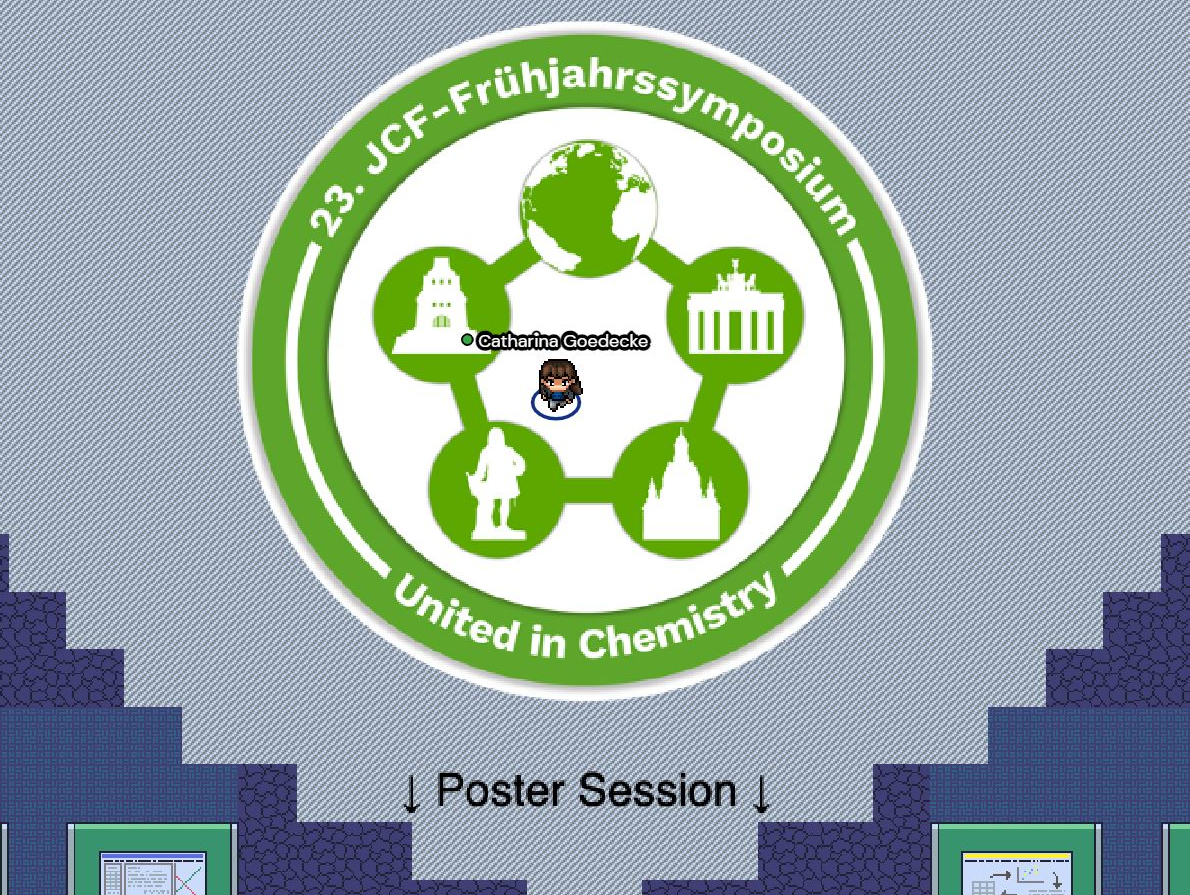
.jpg)
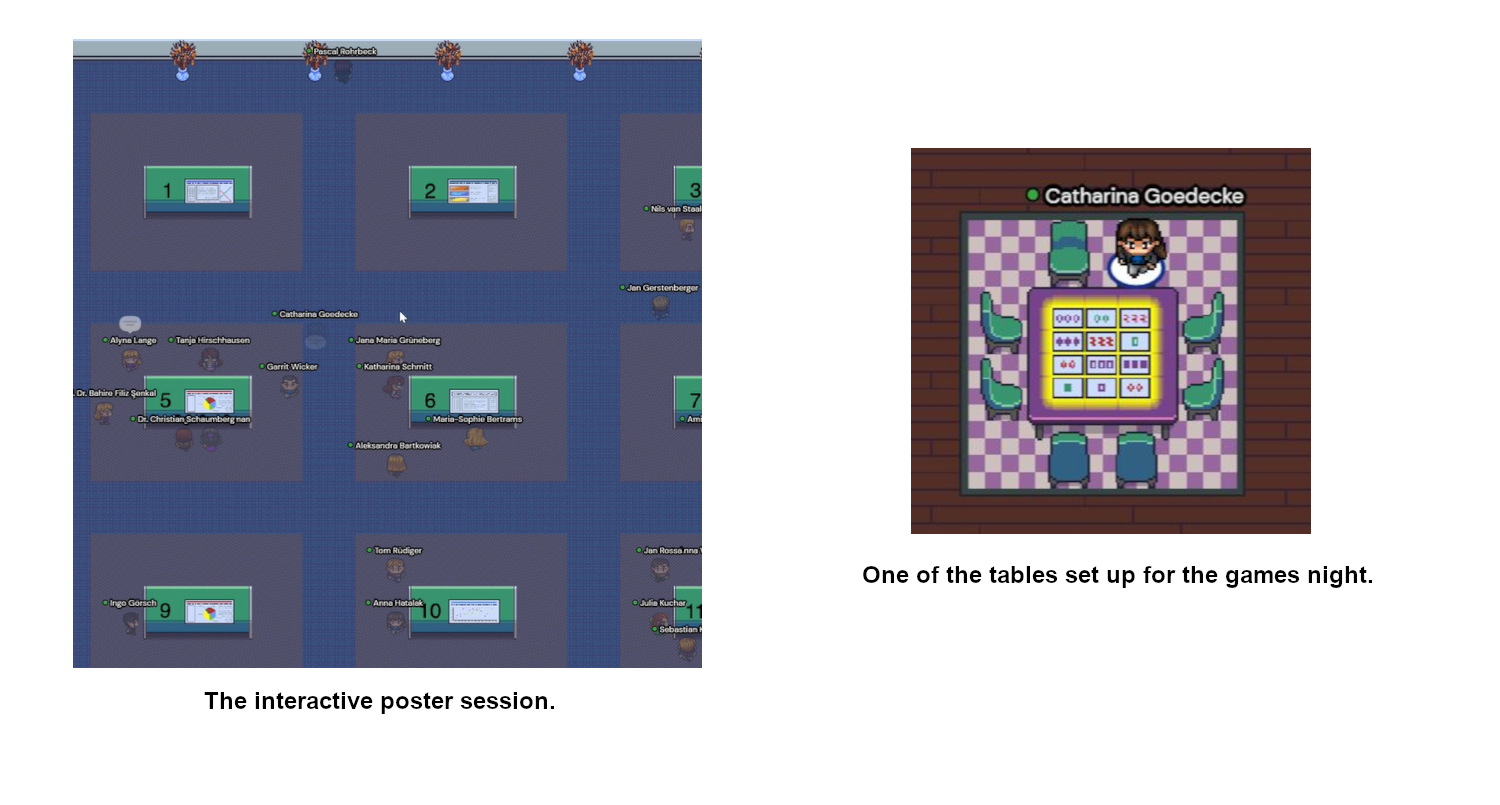
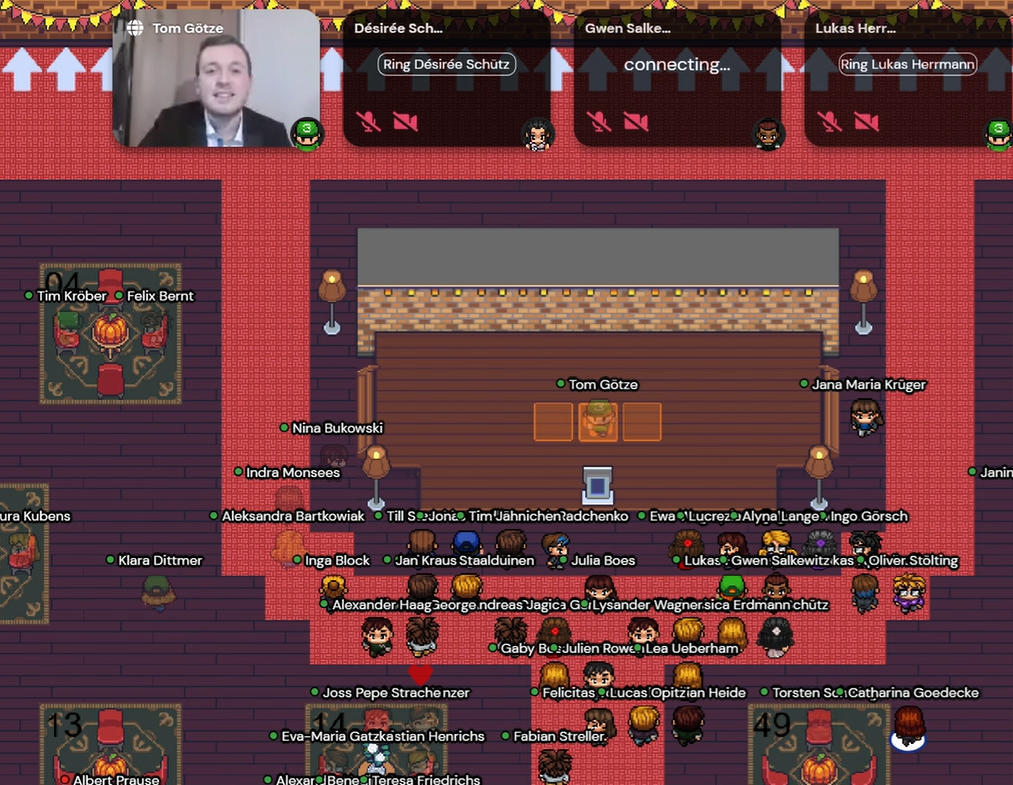
.jpg)
